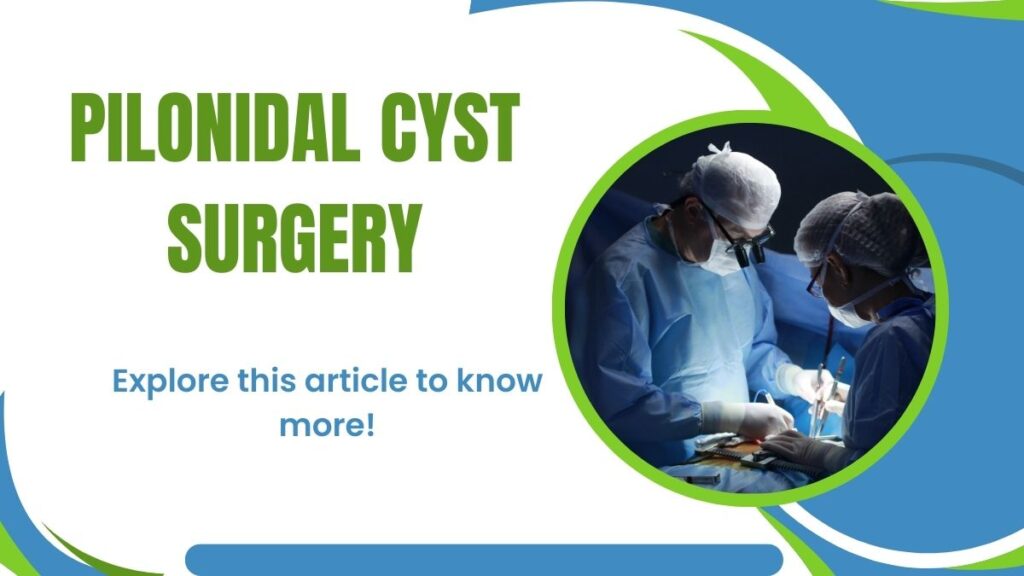A small sac filled with skin, hair, and other types of debris is known as a pilonidal cyst. It appears mainly near your buttocks, just between the clefts. When some hairs get stuck inside the skin, it leads to pilonidal cysts. The ingrown hair causes friction while rubbing or sitting. Your skin may feel irritation, and you will experience cysts. However, infection of the cysts leads to the formation of an abscess (pus). Many doctors recommend pilonidal cyst surgery to treat the condition. Let us learn more about pilonidal cysts.
Are there home remedies for pilonidal cysts?
Most commonly, those who are engaged in truck driving and office work suffer from pilonidal cysts. So, men who need to sit in a place for several hours have a risk of experiencing pilonidal cysts. Moreover, people with thick and stiff body hair may also have this disease.
Only minor surgical processes can give you a remedy for the disease. However, there are some at-home remedies to relieve discomfort and pain from pilonidal disease.
For instance, you can apply a wet and hot compress to your pilonidal cysts several times a day. You can take the pus out by applying heat, and thus, the cyst gets drained. It helps you alleviate your itching sensation and pain.Many people try to pop the cysts with their fingers. As the cysts appear like pimples, they want to pop them.
However, this trick will not solve the problem. Cysts and pimples are different because the former contains debris and hair. So, you cannot squeeze them out. However, pilonidal cysts are located in a place where it is challenging to see them. If you do not treat them, there is a risk of having a scar and infection.
Is a pilonidal cyst different from an abscess?
Pilonidal cysts and abscesses are different because the latter one refers to the accumulation of pus anywhere on or in your body. For instance, they can occur inside your mouth, around some organs, or on your skin.
Due to infectious conditions, your immune system struggles a lot and sends WBC to the infected part. There is a buildup in the damaged tissues. That is why it results in infection, and the pocket becomes full of pus. Over time, it leads to the formation of abscess. Pus has germs, dead tissues, fluids, and WBCs.
A cyst refers to the sac around which you can find abnormal cells. On the other hand, an abscess refers to a pus-filled infection. Some types of fungi or bacteria are responsible for it.
Furthermore, abscesses pilonidal cysts do not cause the same symptoms. You can notice a slow growth of your cysts. A cyst grows slowly. But, as it becomes larger, the condition becomes highly painful. On the contrary, the abscess is highly painful and spreads to different places within a short time.
You have to be aware of the initial symptoms of pilonidal cysts, such as foul smells, red skin, localized pain, and warm sensation. You will also experience blood coming out of the opening from your skin. You should contact your doctor if you find these symptoms.
The doctor will tell whether you need surgery or medication for pilonidal cyst. But, if you have a skin abscess, you will have symptoms like chills, higher temperature, redness, and pain. The affected part will become tender. By diagnosing the symptoms, the doctor will identify the disease and recommend the best treatment.
Differences in treatment
The ways to treat abscesses and pilonidal cysts are different. You should visit the local clinic to treat the conditions. Most surgeons numb the part near the cyst. They apply a local anesthetic before creating a small incision for drainage. However, in case of reoccurrence of pilonidal cyst infection, you have to undergo a major surgery. Nowadays, some doctors recommend topical treatment or oxygen therapy to promote the cyst healing process.
If you want to cure pilonidal cysts, you should stick to your healthcare provider’s instructions. Besides, your dressings should be replaced regularly. Moreover, you should take medications according to the doctor’s prescriptions.
Abscesses are infections causing intense pain. So, you need an effective treatment that prevents the spread of the infection to other body parts. The best treatment will also reduce your pain. The doctor will locate the abscess and remove it with a surgical method.
Some healthcare specialists also recommend X-rays and blood tests to diagnose abscess properly. With a surgical opening and draining, the surgeon will treat the condition. Abscesses also need oral antibiotics to prevent more complicated conditions of infection.
In case of pilonidal cysts, surgery will give a long-term solution. Though it is an effective treatment, you may experience some complications with open surgery.
Conclusion
Not every patient needs pilonidal cyst surgery. So, you can consult a specialist at pilonidalexpert.com to know about the type of treatment you need. Some people confuse abscesses and pilonidal cysts. Without a doctor’s consultation, it is not easy to diagnose the condition.




